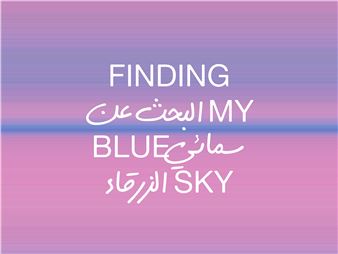Make Light Of It
From chiaroscuro rendered in early European paintings to contemporary minimalist installations composed of fluorescent tubes, artists across mediums have continuously embraced the visual and symbolic potential of light in its various representations. Innately, light plays an essential role in the photographic process, but practitioners of the medium have pushed the aesthetic and technical possibilities of this integral material to constitute both form and content in their work.
Seeking to subvert subject matter, Alfred Stieglitz's Equivalent, 1931 employs the metaphoric power of light to abstractly evoke emotional and experiential states. Other works on view, like William Eggleston's Greenwood, Mississippi, 1973 and Irving Penn's Bedside Lamp, New York, 2006, present more literal interpretations with depictions of light bulbs themselves. Robert Whitman's audiovisual pieces from the Soundies series expand upon this approach, complementing sonically evocative still images – a burning match, for example – with audio of the associative sounds and wall labels bearing matter-of-fact descriptions.
For Harold Edgerton, Hiroshi Sugimoto, and Harry Callahan, light is an instrument of innovation and technical experimentation with the capacity to capture motion normally undetectable to the human eye (Golf Ball), record the effects of electromagnetism (Lightning Fields 216, 2009), and create calligraphic line drawings (Camera Movement on Flashlight, 1946-47). Alternatively, in Lee Friedlander's and Peter Hujar's self-portraits, light effectively serves as an element of wit.
Some works celebrate the natural radiance of atmospheric conditions, while others seek beauty in the artificially illuminated. Peter Hujar captures the frenetic glimmer of New York City's nocturnal skyline, and in Night Walk, Henry Wessel records residential Los Angeles homes that have been converted to stage-like realms of spotlight and shadow by the nighttime glow.

Recommended for you
From chiaroscuro rendered in early European paintings to contemporary minimalist installations composed of fluorescent tubes, artists across mediums have continuously embraced the visual and symbolic potential of light in its various representations. Innately, light plays an essential role in the photographic process, but practitioners of the medium have pushed the aesthetic and technical possibilities of this integral material to constitute both form and content in their work.
Seeking to subvert subject matter, Alfred Stieglitz's Equivalent, 1931 employs the metaphoric power of light to abstractly evoke emotional and experiential states. Other works on view, like William Eggleston's Greenwood, Mississippi, 1973 and Irving Penn's Bedside Lamp, New York, 2006, present more literal interpretations with depictions of light bulbs themselves. Robert Whitman's audiovisual pieces from the Soundies series expand upon this approach, complementing sonically evocative still images – a burning match, for example – with audio of the associative sounds and wall labels bearing matter-of-fact descriptions.
For Harold Edgerton, Hiroshi Sugimoto, and Harry Callahan, light is an instrument of innovation and technical experimentation with the capacity to capture motion normally undetectable to the human eye (Golf Ball), record the effects of electromagnetism (Lightning Fields 216, 2009), and create calligraphic line drawings (Camera Movement on Flashlight, 1946-47). Alternatively, in Lee Friedlander's and Peter Hujar's self-portraits, light effectively serves as an element of wit.
Some works celebrate the natural radiance of atmospheric conditions, while others seek beauty in the artificially illuminated. Peter Hujar captures the frenetic glimmer of New York City's nocturnal skyline, and in Night Walk, Henry Wessel records residential Los Angeles homes that have been converted to stage-like realms of spotlight and shadow by the nighttime glow.
Artists on show
- Alfred Stieglitz
- Claes Oldenburg
- Claes Oldenburg and Coosje van Bruggen
- Coosje van Bruggen
- Emmet Gowin
- Hai Bo
- Harold Eugene Edgerton
- Harry Callahan
- Henry Wessel
- Hiroshi Sugimoto
- Irving Penn
- Kiki Smith
- Lee Friedlander
- Paul Graham
- Peter Hujar
- Ray Metzker
- Robert Adams
- Robert Frank
- Robert Irwin
- Robert Whitman
- William Eggleston












